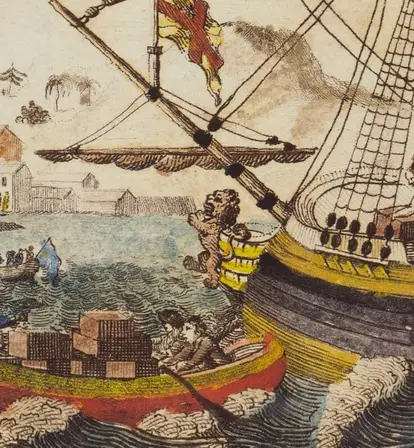On December 16, 1773, American colonists protested the British Parliament's tax on tea by throwing British tea into Boston Harbor — and changed history.
On a winter night in 1773, angry colonists gathered at Boston’s Old South Meeting House to discuss an issue that had consumed the city for months: tea. In protest of the British Parliament’s Tea Act, the colonists had refused to let three ships in Boston Harbor offload British tea. But the loyalist governor would not allow the ships to leave. Then, Sons of Liberty leader Samuel Adams got to his feet before the agitated crowd. “This meeting,” the patriot declared, “can do nothing more to save the country!”
With that, the Boston Tea Party began. Over 100 men poured toward Boston Harbor, clutching hatchets, their cheeks streaked with coal. As thousands of exuberant colonists gathered on the shore to watch and cheer them on, the protestors boarded three ships: the Dartmouth, the Beaver, and the Eleanor, and began to dump crate after crate of tea into the frigid waters below.
This act of political protest, born from almost a decade of frustration among American colonists about British taxation policies, would have far-reaching consequences. Though some colonists — including George Washington — thought that the Bostonians had gone too far, they were appalled with the fierce and forceful British reaction to the protest. In response, the British closed Boston Harbor, restricted town meetings, transferred judicial authority to Britain, and compelled Bostonians to quarter British troops.
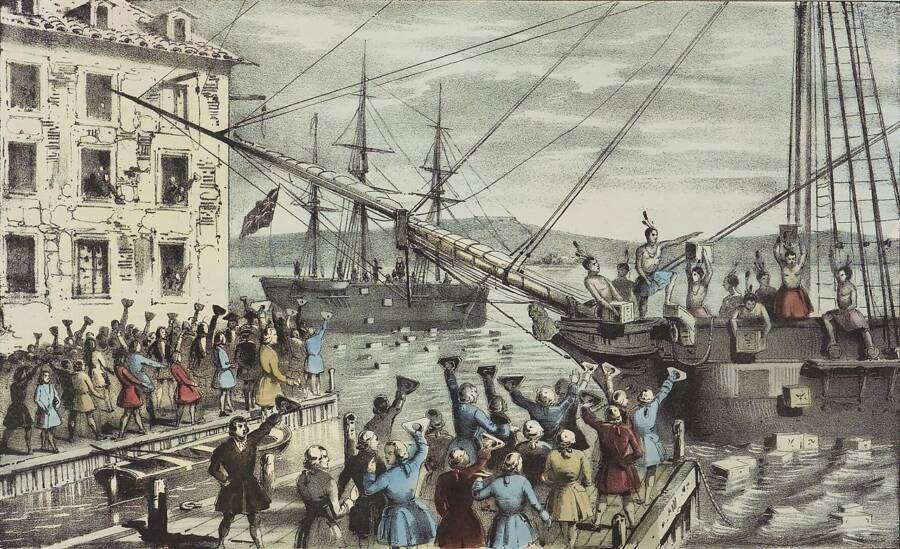
Public DomainThousands of onlookers watched and cheered as over 100 American colonists disguised as Native Americans dumped hundreds of chests of tea into the water during the Boston Tea Party.
This, even for colonists like Washington, was a step too far. “[T]he cause of Boston,” the future first president of the United States grimly declared, “now is and ever will be considered as the cause of America.”
Indeed, the Boston Tea Party turned out to be one of the dominoes that would lead the American colonies to war — and independence. The attack on ships in Boston Harbor in 1773 led to the passage of the hated Coercive Acts (dubbed the Intolerable Acts by the colonists), which in turn led to the “shot heard ’round the world” at Lexington and Concord in 1775.
So how did the colonies get to the point where they wanted to throw tea into Boston Harbor? Here’s everything you need to know about the Boston Tea Party, from its root causes, to its participants, to its impact on history.
What Was The Boston Tea Party?
The Boston Tea Party was a political protest perpetrated by American colonists who were frustrated with British taxation policies. This frustration came to a head at Griffin’s Wharf in Boston, Massachusetts, when over 100 colonists forced their way onto three ships in Boston Harbor, which had hundreds of crates of British tea in their cargo.
Disguised as Native Americans — both as a symbol of American independence and to conceal their identities — the group seized the tea and dumped £10,000 (millions of dollars in today’s money) of it into the water.
“In about three hours from the time we went on board, we had thus broken and thrown overboard every tea chest to be found in the ship, while those in the other ships were disposing of the tea in the same way, at the same time,” one participant, George Hewes, later wrote. “We were surrounded [by] British armed ships, but no attempt was made to resist us.”
The Boston Tea Party itself lasted just a few hours, but it would have long-lasting implications for the future of America. Though the British authorities were furious, the protest energized many colonists. Reactions from both sides would move the British and the colonists closer to the American Revolutionary War, which broke out just a couple of years later.
When Was The Boston Tea Party?
The Boston Tea Party took place on December 16, 1773. By then, a number of incidents had led to increased tensions between colonists and the British.
In the 1760s, the British began to impose a number of new taxes on the American colonists. At the time, the British Empire was deep in debt after fighting the Seven Years’ War (also called the French and Indian War), which had broken out between the British and French. In America, this war led to brutal battles that pitted the French and their Native American allies against the British, Anglo-American colonists, and their Native American allies.
The conflict had resulted in a British victory and the French relinquishment of a large amount of land. But it had also been expensive. To recoup their losses — and because the war had ultimately benefited the colonists — the British began to tax the Americans, starting with the Stamp Act of 1765. As the Library of Congress reports, this created a tax on “newspapers, almanacs, pamphlets, broadsides, legal documents, dice, and playing cards.”
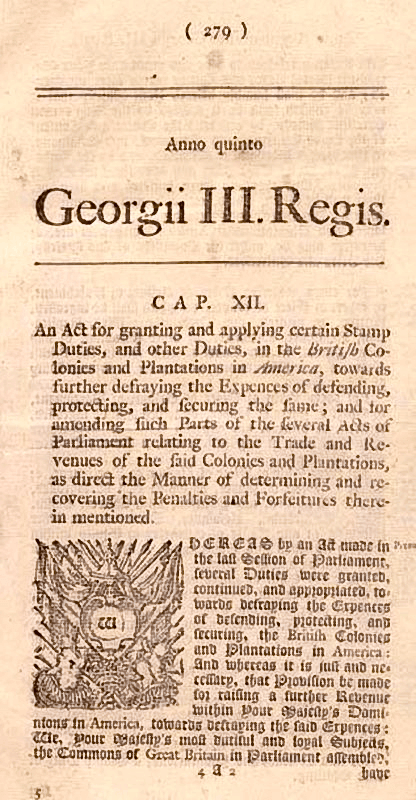
Library of CongressA printed copy of the Stamp Act from 1765.
The colonists were displeased with this “taxation without representation” and the Stamp Act was repealed in 1766. But the Townshend Acts were instituted the next year, which taxed paint, paper, glass, lead, and tea.
As relations strained, the tension came to a violent head in Boston in 1770, when British soldiers opened fire on a mob that had been throwing snowballs, ice, and oyster shells at a sentinel as he guarded the Boston Customs House. The so-called Boston Massacre enraged colonists, putting the British and the Americans further down the path toward war.
Then, the British instituted the Tea Act.
What Was The Tea Act?
The Tea Act, which was passed in 1773, permitted the British East India Company to sell tea duty-free to colonists, which gave the British East India Company a monopoly on tea sales in the colonies. As the Bill of Rights Institute reports, this was done to boost the company’s dwindling fortunes, which were directly tied to the British Empire’s wider economy.
But the colonists were outraged. It was not the tax itself that they resented, but what it represented. As HISTORY explains, the Tea Act cut colonial merchants out of the deal, enraging American merchants. Other colonists despised the Tea Act because it was one more instance of the British imposing taxes without allowing Americans representation in Parliament.
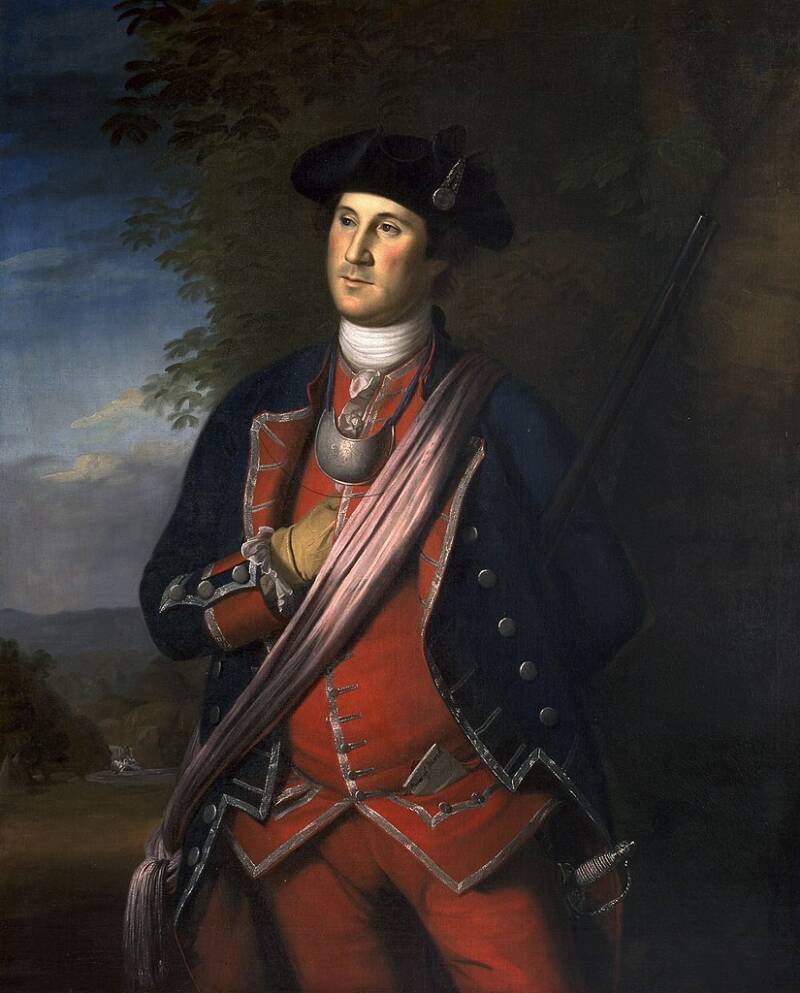
Public DomainGeorge Washington was one of many colonists who thought that British taxation policies were unfair, though he also thought that the Bostonians were “mad” for dumping chests of tea into Boston Harbor during the Boston Tea Party.
“What is it we are contending against?” George Washington stated. “Is it against paying the duty of [three pence per pound] on tea because [it is] burdensome? No, it is the right only… that, as Englishmen, we could not be deprived of this essential and valuable part of our constitution.”
From Charleston to New York, colonists prevented tea from being unloaded in protest of the Tea Act. More organized efforts to protest were also afoot, as patriot groups like the Sons of Liberty — which had initially been formed to protest the Stamp Act — held meetings to discuss further actions.
Why Did The Boston Tea Party Happen?
The Boston Tea Party was the colonists’ explosive response to the British Parliament’s Tea Act. But it was also a response to a larger issue: They felt that they were constantly being unfairly taxed by the British Empire. However, the Boston Tea Party didn’t happen immediately.
On November 28, 1773, a ship called the Dartmouth arrived in Boston Harbor laden with 114 crates of British tea. But patriot leaders like Samuel Adams refused to let the crew unload the tea. As the Bill of Rights Institute explains, figures like Adams wanted to inspire colonists to join their cause and prevent the tea from being sold. They didn’t want colonists to be tempted to buy it.
Thousands of colonists crowded Boston Harbor and refused to let the Dartmouth unload its tea. But Governor Thomas Hutchinson, a loyalist, also refused to allow the ship to sail back to Britain. So the Dartmouth was stuck. And over the next couple of weeks, two more ships with cargos full of British tea sailed into Boston Harbor, the Beaver and the Eleanor.
“The Tea that bainfull weed is arrived,” Abigail Adams, the wife of John Adams, wrote to a friend on December 5th. “Great and I hope Effectual opposition has been made to the landing of it… The flame is kindled…”
The patriots and the loyalist governor were at an impasse. Hutchinson ordered the tea to be unloaded; the colonists in Boston refused to let this happen. Thousands gathered at Boston’s Old South Meeting House, where patriot leader Samuel Adams got to his feet before the crowd.
“This meeting,” he declared, “can do nothing more to save the country!”
At this — which may have been a signal — the crowd went wild. Then, a hoard of men headed toward the ships trapped in Boston Harbor.
What Happened At The Boston Tea Party?
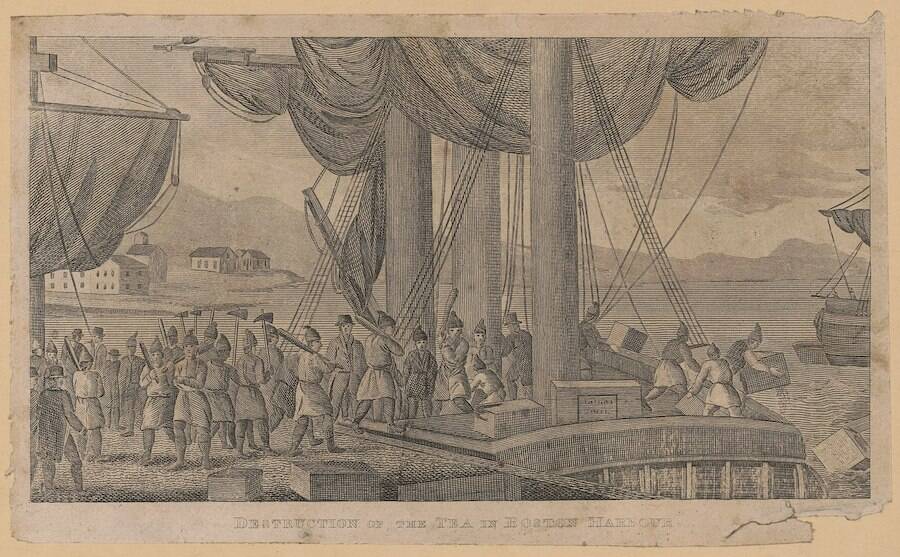
Library of Congress/Wikimedia CommonsA depiction of the destruction of tea during the Boston Tea Party.
On December 16, 1773, over 100 men forced their way onto the Dartmouth, Beaver, and Eleanor. Dressed up as Native Americans, the group of colonists began to systematically throw the chests of tea into Boston Harbor.
“I immediately dressed myself in the costume of an Indian…[and] after having painted my face and hands with coal dust in the shop of a blacksmith, I repaired to Griffin’s wharf, where the ships lay that contained the tea,” George Hewes, one of the colonists who participated in the Boston Tea Party, later explained. “We were immediately ordered by the respective commanders to board all the ships at the same time.”
Hewes continued describing the experience: “We then were ordered by our commander to open the hatches and take out all the chests of tea and throw them overboard, and we immediately proceeded to execute his orders, first cutting and splitting the chests with our tomahawks, so as thoroughly to expose them to the effects of the water.”
Over the course of about three hours, the colonists dumped tea into Boston Harbor as thousands of their fellow patriots standing on the shore cheered them on. Then, the disguised colonists and the crowd went home.

Public DomainJohn Adams in 1776. Adams, unlike some of his fellow Founding Fathers, was an early and enthusiastic supporter of the Boston Tea Party, describing it as “the grandest event.”
Afterward, prominent colonists reacted in different ways. John Adams enthusiastically wrote to a friend about the Boston Tea Party, saying: “This is the grandest, Event, which has ever yet happened Since, the Controversy, with Britain, opened!…The Sublimity of it, charms me!”
In his diary, Adams added: “This Destruction of the Tea is so bold, so daring, so firm, intrepid and inflexible, and it must have so important Consequences, and so lasting, that I cant but consider it as an Epocha in History… The Question is whether the Destruction of this Tea was necessary? I apprehend it was absolutely and indispensably so.”
But George Washington called the Bostonians “mad,” and Benjamin Franklin stated that the British East India Company should be reimbursed.
Indeed, the colonists destroyed a massive amount of tea.
How Much Tea Was Dumped?
Over the course of about three hours, the colonists dumped about 340 chests filled with more than 90,000 pounds (about 45 tons) of tea into the Boston Harbor. The British East India Company reported £9,659 worth of damage, according to the Boston Tea Party Ships & Museum (over $1,700,000 in today’s currency). The museum also reports that the tea dumped into Boston Harbor in 1773 was likely equivalent to “18,523,000 cups of tea.”
That said, the protestors didn’t go any further than tea dumping. They broke a padlock, which they quickly replaced the next day, and even swept the decks of the ships that they’d seized after the attack was over.
Indeed, the protest, though destructive, was a remarkably calm affair. No one was killed, and just one man, a colonist named John Crane, was injured. Crane was knocked unconscious during the attack and was hidden under a pile of wood shavings afterward until he recovered.
Who Led The Boston Tea Party?

Library of Congress/Wikimedia CommonsSince the Boston Tea Party protestors disguised themselves as Native Americans, it was difficult for many onlookers to identify them — and few willingly admitted to their participation.
The Boston Tea Party was organized by the Sons of Liberty, which included prominent colonists like Samuel Adams, John Adams, John Hancock, and Paul Revere. That said, the full leadership of the Boston Tea Party is murky even to this day. The same can be said about nearly all the participants.
HISTORY explains that because the colonists were in disguise, it’s difficult to know who exactly participated in the Boston Tea Party (and thus, who the “commanders” described by Hewes really were). Just one person, Francis Akeley, was arrested, and most other protestors kept their participation secret even after the American Revolutionary War was over. They feared being charged with a crime or condemned by elites for destroying property.
Whether or not Samuel Adams was the main leader of the Boston Tea Party, he certainly defended the colonists’ actions in the aftermath. The loss of the tea, he wrote afterward, was the fault of “the consignees, together with the customs collector, and the governor of this province [Hutchinson]” because they had refused to let the ships leave Boston Harbor.
What Happened To The Ships From The Boston Tea Party?
As the Boston Tea Party Ships & Museum reports, the three ships involved in the Boston Tea Party lived to sail another day. As mentioned above, the colonists who participated in the Boston Tea Party were careful to not damage the ships and to only target the tea they carried as cargo.
Though there is no record of exactly what happened to the Eleanor (her homeport was the city of Boston), the Dartmouth and Beaver returned to London at the beginning of 1774. There, the Dartmouth’s captain, James Hall, and other witnesses testified about “the late transaction in Boston.”
And of course, the British public soon heard about the Boston Tea Party.
How Did The British React To The Boston Tea Party?
At first, the British reacted to the Boston Tea Party as a mere annoyance. Massachusetts History reports that King George III dismissed the protestors as nothing but a few bad eggs, commenting: “I am much hurt that the instigation of bad men hath again drawn the people of Boston to take such unjustifiable steps; but I trust by degrees tea will find its way there.”
But as details of the Boston Tea Party and the destruction its participants had caused began to trickle in, British sentiment started to change. Witnesses to the event began to testify as to what they saw, and the British public began to read about the attack in reprinted news reports from the Boston Gazette.
The British Privy Council then summoned colonial representative Benjamin Franklin to appear before the council on January 29, 1774. After berating Franklin and accusing him of leaking letters that had contributed to the unrest in Boston, the British Privy Council decided to take “effectual steps… to secure the dependence of colonies on the Mother Country.”
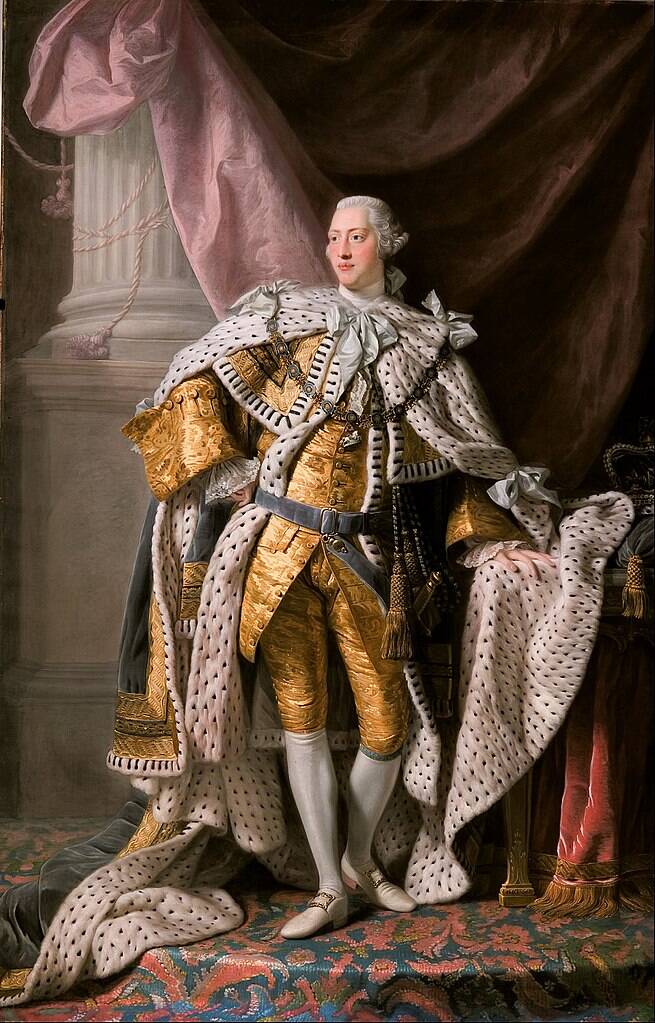
Public DomainKing George III’s reaction to the Boston Tea Party was initially muted, but as more details poured in, he and the British Parliament became resolved to punish Boston.
Previously, the British had repealed acts that the colonists disliked, like the Stamp Act and the Townshend Acts. But this time, they decided that the unruly colonists needed a firmer hand. As public outrage in Britain grew, British politicians decided “to mark out Boston” for punishment.
The city of Boston, one politician declared, “had been the ringleader of all violence and opposition to the execution of the laws of this country. New York and Philadelphia grew unruly on receiving the news of the triumph of the people of Boston. Boston has not only therefore to answer for its own violence but for having incited other places to tumults.”
Then, the British Parliament passed several acts known as the Coercive Acts, which the colonists would soon label the “Intolerable Acts.”
What Were The Intolerable Acts?
The Intolerable Acts did several things. As the Bill of Rights Institute reports, the Boston Port Act closed Boston Harbor until the destroyed tea was paid for; the Massachusetts Government Act banned town meetings; the Impartial Administration of Justice Act permitted British officials to be tried in England for any serious crimes they allegedly committed in America; and the Quartering Act required colonists to quarter British troops.
Massachusetts Governor Thomas Hutchinson, though a loyalist, was also soon replaced with British general Thomas Gage.
Around the same time, Franklin penned an angry public letter under an assumed name. Parliament, he wrote, was “no better acquainted with their History or Constitution than they are with the Inhabitants of the Moon… The Flame of Liberty in North America shall not be extinguished. Cruelty and Oppression and Revenge shall only serve as Oil to increase the Fire.”
Franklin’s words were prophetic. Across the colonies, American colonists responded to the Intolerable Acts with rage.
How Did The Colonists React To The Intolerable Acts?
The British hoped that punishing Boston would crush rebellion (or even thoughts of rebellion) across the colonies. But the opposite happened. Even those who had disapproved of the Boston Tea Party, like George Washington, believed that the British had gone too far with the Intolerable Acts.
“[T]he cause of Boston,” Washington declared, “now is and ever will be considered as the cause of America.”
Indeed, colonists saw the Coercive Acts as a punishment against all colonies, not just Massachusetts. Colonies aided Boston by sending supplies, and politicians soon began to discuss mounting a more united response.
On September 5, 1774, delegates from the American colonies — except for Georgia — gathered in Philadelphia to discuss resisting the British and declaring their rights. This meeting was called the First Continental Congress.
What Was The First Continental Congress?
The First Continental Congress gathered in September 1774 to hammer out a response to the Coercive Acts. It included several Founding Fathers, such as John Adams, George Washington, and John Jay.
Of all the delegates, Adams pushed the hardest for independence. At the time, as PBS reports, this was a radical idea and most of the other delegates preferred to continue to work with the British, not against them.

Architect of the CapitolA depiction of the First Continental Congress in the U.S. Capitol.
They decided to issue a Declaration of Rights, which was careful to affirm the colonies’ loyalty to the British. However, it also pushed back against Parliament’s right to tax the colonies without giving them representation. The delegates also passed the Articles of Association, which threatened to stop importing British goods if the Intolerable Acts were not rescinded.
The First Continental Congress soon disbanded in October 1774. But by May 1775, they had reconvened for the Second Continental Congress. And this time, more people were in Adams’ pro-independence camp.
By then, relations between the British and the Americans had turned violent.
What Happened After The Boston Tea Party?
The Boston Tea Party turned out to be one of the many dominoes that led to the American Revolutionary War. After the attack on the ships in Boston Harbor, the British passed the Coercive Acts and British troops poured into Boston. Then, in April 1775, gunfire was exchanged between British troops and American militiamen at Lexington and Concord after the British tried to seize American ammunition. Dozens were killed and wounded on both sides.
John Adams later described Lexington and Concord as the moment that “the Die was cast, the Rubicon crossed.”
He and other delegates met at the Second Continental Congress on May 10, 1775. Despite the violence in Massachusetts, however, the delegates still did not agree on a path forward. Some were still loyal to Britain, some weren’t sure what to do, and some had started to agitate for independence.
By 1776, however, as battles raged across the colonies, the Continental Congress adopted Thomas Jefferson’s Declaration of Independence, which formally severed ties between the American colonies and the British Empire.
Why Was The Boston Tea Party Important?

Wikimedia CommonsA plaque marking the former location of Griffin’s Wharf, where the Boston Tea Party took place.
The Boston Tea Party was important for a couple of different reasons. First, it encapsulated American frustrations with British taxation policies, which had been steadily building ever since the Stamp Act of 1765. Second, it acted as one of the stepping stones that led to the American Revolution.
Americans were divided about the Boston Tea Party itself. As explained above, some prominent colonists saw the Boston Tea Party as an unmerited attack on private property, which elites saw as sacrosanct. And at the time, all of the colonists were still British subjects, and many hoped that fair treatment from Britain would still be possible.
But the British response to the Boston Tea Party galvanized people across the American colonies. The Coercive Acts (or Intolerable Acts) increased the colonists’ resentment and put the conditions into place that would lead to Lexington and Concord — and a full-out war for independence.
After looking through these facts about the Boston Tea Party, learn something new about America’s Founding Fathers with this list of surprising facts. Or, enjoy these fascinating facts about George Washington.
